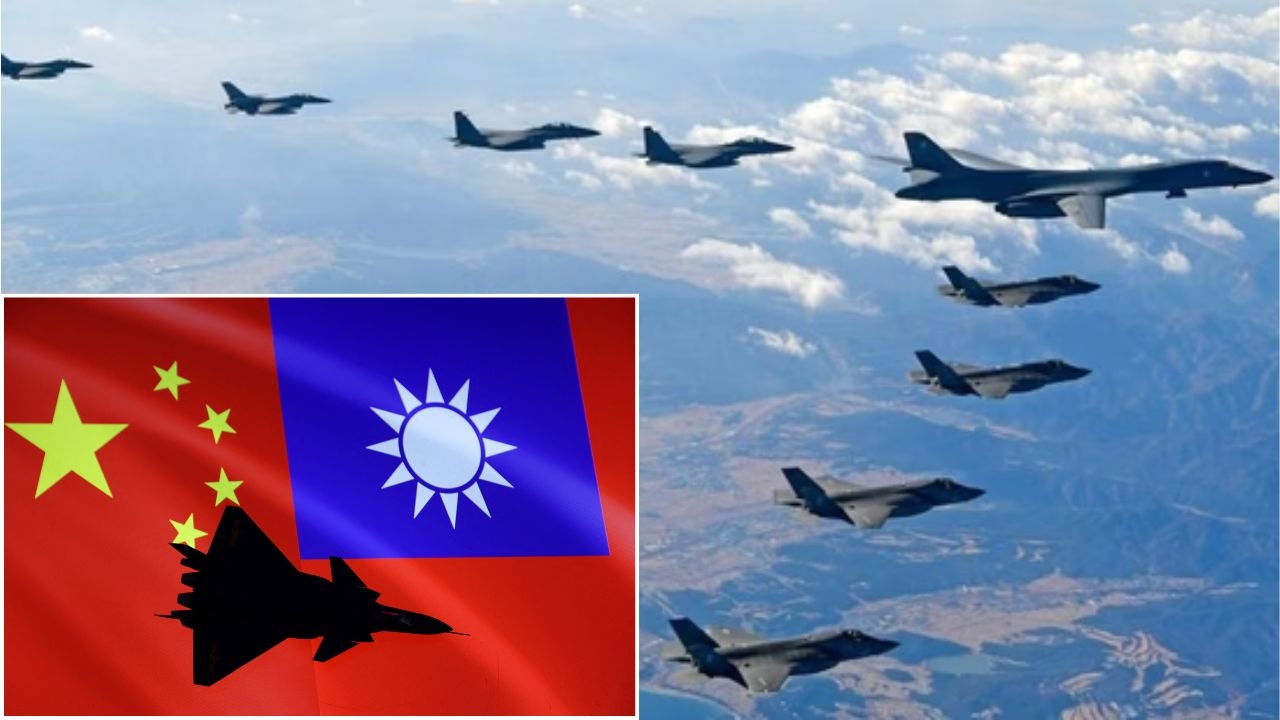China’s Persistent Airspace Violations Over Taiwan: A Provocative Strategy
Taiwan detected a single-day record of 66 Chinese military aircraft operating around the island on a single day, making it the highest number this year. The Ministry of National Defense reported that 56 of these planes crossed the median line of the Taiwan Strait and entered Taiwan"s northern, southwestern, and southeastern air defense identification zones (ADIZ).
Total Views |

China's continuous incursions into Taiwan's airspace, conducted by the People's Liberation Army (PLA) jets, reflect Beijing's aggressive posture and strategic objectives toward the self-governed island. The escalating frequency and intensity of these airspace violations signal China's determination to intimidate Taiwan and assert its sovereignty claims, while simultaneously sending a clear message to international observers and allies of Taiwan, particularly the United States.
Escalation of Airspace Violations
Since the beginning of 2024, Taiwan has reported an unprecedented number of daily sorties by Chinese warplanes. These incursions, often involving dozens of aircraft, have become more aggressive and provocative. For instance, on May 15, 2024, Taiwan's Ministry of National Defense reported that 45 Chinese warplanes entered its airspace within a 24-hour period, with 26 of these aircraft crossing the median line of the Taiwan Strait, an unofficial boundary that Beijing does not recognize.
Most recently, Taiwan detected a single-day record of 66 Chinese military aircraft operating around the island on a single day, making it the highest number this year. The Ministry of National Defense reported that 56 of these planes crossed the median line of the Taiwan Strait and entered Taiwan's northern, southwestern, and southeastern air defense identification zones (ADIZ). Additionally, seven Chinese navy vessels were also detected operating around Taiwan.
These actions are part of a broader pattern of military manoeuvres by China aimed at undermining Taiwan's air defence capabilities and testing the island's military readiness. The incursions typically involve a mix of fighter jets, bombers, and reconnaissance planes, demonstrating the PLA's capability to conduct coordinated and sustained operations near Taiwan's airspace.
Strategic Objectives of China
China's airspace violations serve multiple strategic objectives. Firstly, they are a means of psychological warfare, aimed at wearing down Taiwan's air defence systems and military personnel through constant pressure and high operational tempo. This strategy is designed to create a sense of inevitability about a potential military conflict, thereby eroding the morale of Taiwan's populace and its armed forces.
“Secondly, these incursions are a demonstration of China's military might and a signal to both domestic and international audiences. By showcasing its advanced military capabilities, including the use of J-20 stealth fighters and other cutting-edge aircraft, China seeks to reinforce its narrative of inevitable reunification with Taiwan, either through coercion or force.”
Political Motives Behind the Incursions
Beijing's aggressive posture is also closely tied to its political objectives. The Chinese government views Taiwan as a breakaway province that must be reunified with the mainland, and any actions by Taiwan that suggest a move towards greater independence are met with strong military responses. For instance, the recent intensification of airspace violations coincided with the inauguration of Taiwan's new president, Lai Ching-te, who is perceived by Beijing as a "dangerous separatist."
China's military drills and airspace violations are also intended to deter foreign intervention, particularly by the United States. The presence of US military forces in the region and their support for Taiwan's defense are seen by Beijing as significant obstacles to its reunification ambitions. Consequently, the PLA's operations are designed to project power and signal to Washington and its allies that China is prepared to escalate military tensions if necessary.
The Broader Geopolitical Context
The increasing frequency of China's airspace violations over Taiwan must be understood within the broader context of regional and global geopolitics. The Indo-Pacific region has become a focal point of strategic competition between China and the United States, with Taiwan at the centre of this rivalry. China's actions are not only aimed at Taiwan but also at challenging US influence in the region and testing the resolve of its allies, including Japan and Australia.
Moreover, China's assertive military posture is part of a broader strategy to expand its influence and control over the East and South China Seas. By conducting regular military operations near Taiwan, China seeks to normalise its presence in the area and gradually shift the status quo in its favour. This strategy is complemented by other measures, such as the establishment of new air routes close to Taiwan's restricted airspace and the deployment of military assets to the region.
Conclusion
China's continuous airspace violations over Taiwan are a clear manifestation of its aggressive and expansionist policies. These actions not only threaten regional stability but also challenge the international norms that govern airspace and maritime boundaries. By persistently intruding into Taiwan's airspace, China is sending a stark message: it will stop at nothing to achieve its goal of reunification, even if it means escalating military tensions to dangerous levels.
The international community, particularly the United States and its allies, must respond decisively to these provocations to ensure that Taiwan's sovereignty and security are upheld. Failure to do so could embolden China to take even more aggressive actions, potentially leading to a broader conflict in the Indo-Pacific region. As Taiwan continues to face unprecedented military pressure, the world must stand in solidarity with the island nation and reaffirm its commitment to peace and stability in the region.
Article by
Shomen Chandra
Sub Editor, The Narrative


